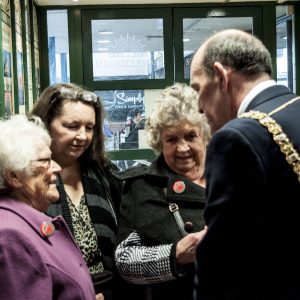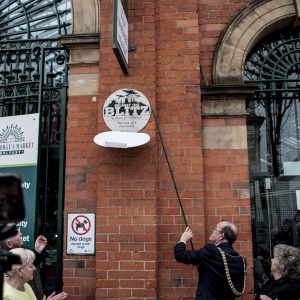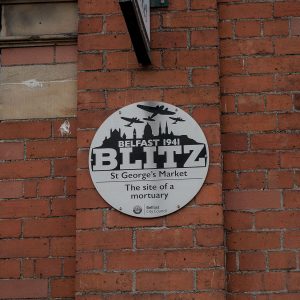St. George's Market on East Bridge Street, Belfast, Co. Antrim is the last of the city's old Victorian markets. As well as hosting concerts and other events, the building still operates as a busy market at weekends.
An old market existed on the site dating back to the 1600s. The open-air market probably contained a slaughterhouse and a meat market. Belfast Corporation commissioned the building of a covered marketplace in 1890. Designed by JC Bretland, it features red brick and sandstone dressing with Roman-style arches.
The new market opened to the public on 20th June 1890 and people of Belfast flocked through the archways. Those entrances feature the city motto in Latin – “Pro Tanto Quid Retribuamus” (What shall we give in return for so much?) and the Irish “Lámh Dearg na hÉireann” (Red Hand of Ireland). The main entrance displays the Belfast coat of arms.
The Belfast Blitz
In the days following the Belfast Blitz, St. George’s Market saw use as a temporary mortuary as the city’s morgues became overwhelmed. Additional mortuaries appeared at the Falls Road Public Baths and Peters Hill Public Baths.
Over 250 bodies lay in the marketplace awaiting identification. Many bodies remained unclaimed and a mass burial took place on 21st April 1941. A Protestant service took place at Belfast City Cemetery while a Catholic service took place at Milltown Cemetery.
Emma Duffin, a nurse who served during World War One on the western front wrote of the horrors she faced in St. George’s Market.
All the way to the place I had told myself I was bound to see horrible sights but only when seen could the full horror be realised. I had seen death in many forms, young men dying of ghastly wounds, but nothing I had ever seen was as terrible as this.
They had died in hospital beds, their eyes had been reverently closed, their hands crossed to their breasts. Death had to a certain extent been made decent. It was solemn, tragic, dignified, but here it was grotesque, repulsive, horrible. No attendant nurse had soothed the last moments of these victims, no gentle reverent hand had closed their eyes or crossed their hands. With tangled hair, staring eyes, clutching hands, contorted limbs, their grey-green faces covered with dust, they lay, bundled into the coffins, half-shrouded in rugs or blankets, or an occasional sheet, still wearing their dirty, torn twisted garments.
Death should be dignified, peaceful; Hitler had made even death grotesque. I felt outraged, I should have felt sympathy, grief, but instead feelings of revulsion and disgust assailed me.



